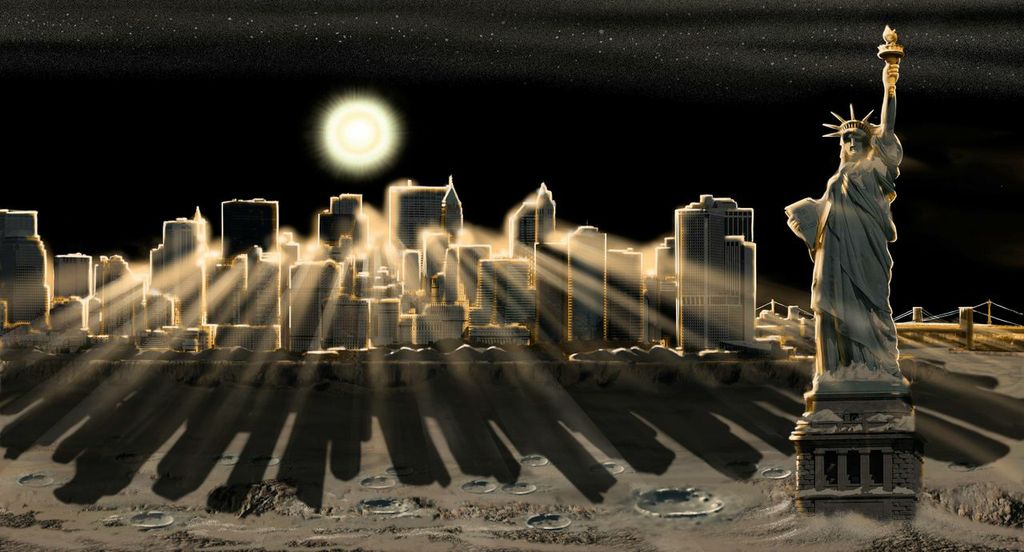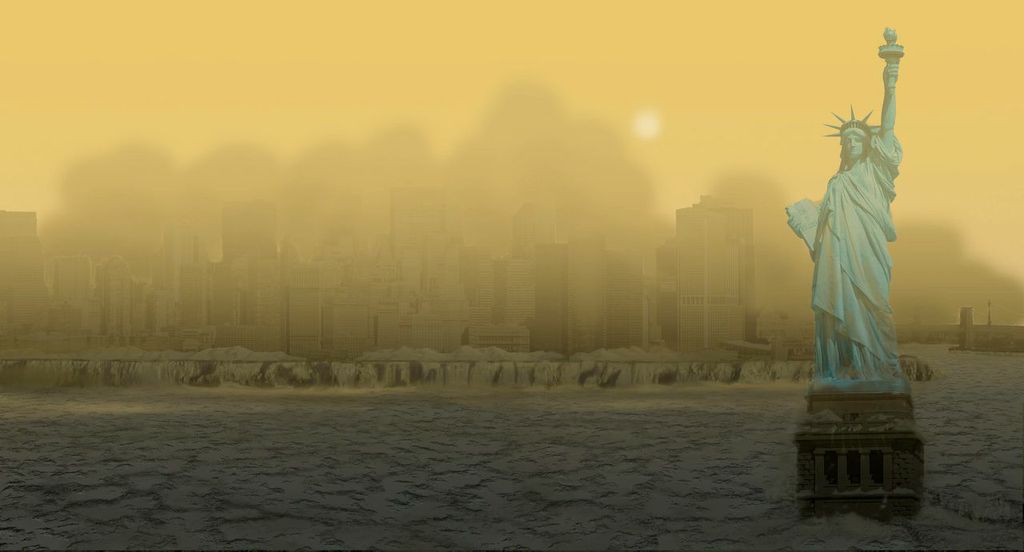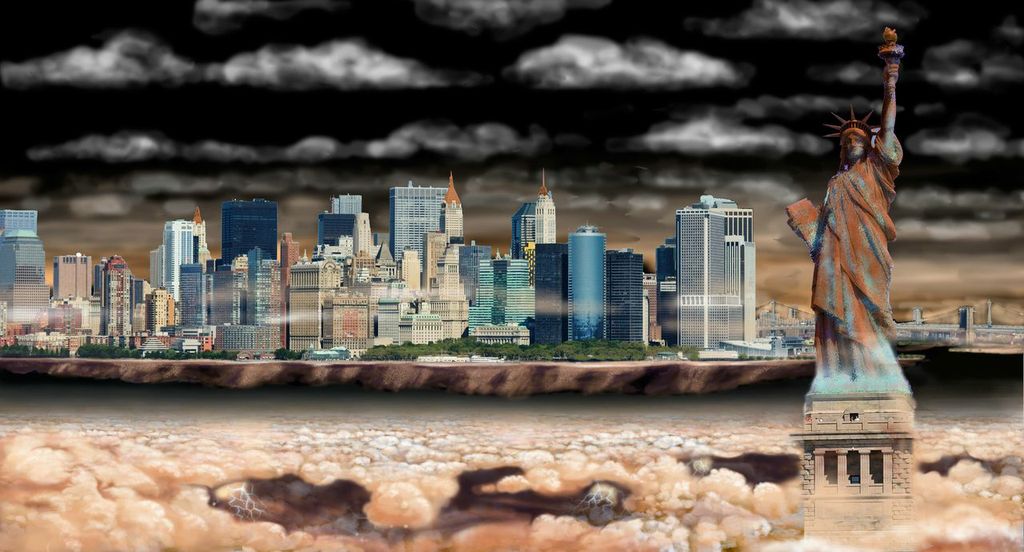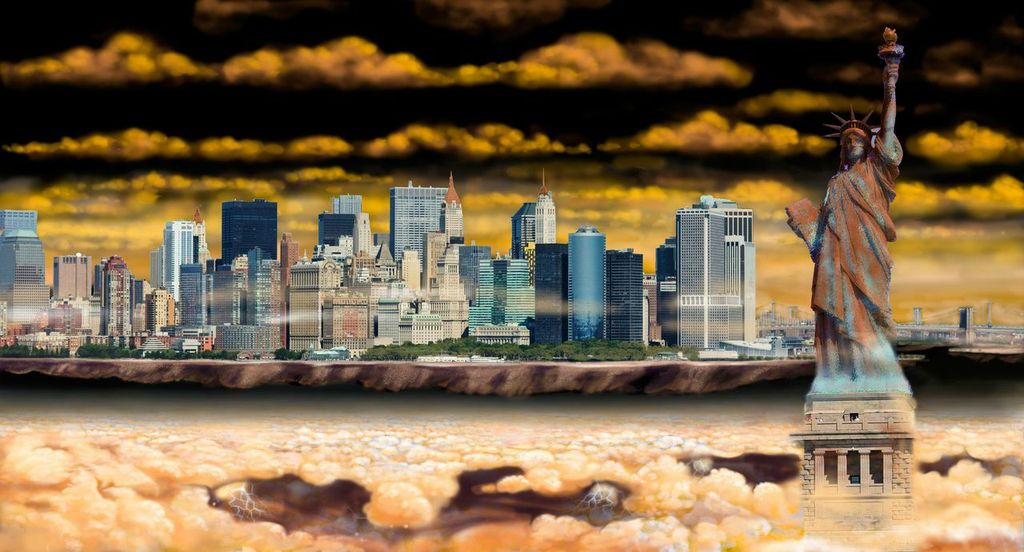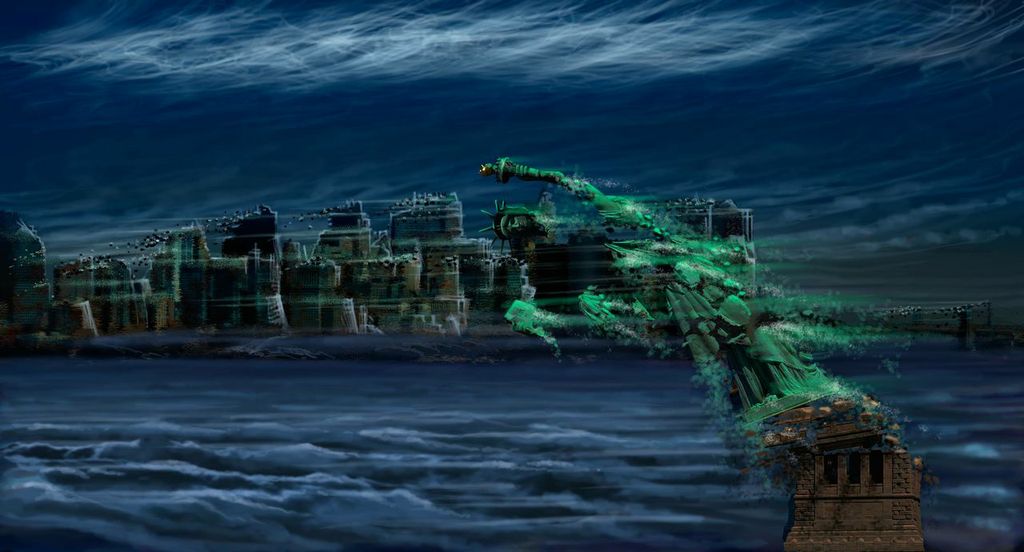Here – from Nickolay Lamm of StorageFront.com and Dr. M Browning Vogel – is how New York City would look beneath the atmospheres of other planets in our solar system. Dr. Vogel, a former NASA astrobiologist and now a university science teacher, provided the captions below. Lamm told EarthSky:
These illustrations were drawn in Photoshop and it took around 2-3 hours for each image. I worked with another artist to make sure that illustrations were an accurate representation of Vogel’s descriptions.
The idea came after seeing images of Mars’ Mount Sharp. I felt that if I could show people what New York City looked like on other planets, I’d give people a sense of how lucky we are to be living on Earth.
If you look outside, the sky, the air, the ground, the water, all mix perfectly to create what we call life. From our perspective, everything seems abundant. By giving people perspectives of New York City on different planets, I’m hoping to show people that everything around us isn’t as abundant as we perceive it to be.
If New York City were on Mercury …
Mercury has but a thin envelope of gas that barely qualifies as an atmosphere. The inexorable solar wind continually strips the planet of any gases that might be captured or retained by gravity. The tenuous atmosphere consists primarily of hydrogen making the atmosphere transparent to the darkness of space and the withering radiance of the nearby Sun. The solar wind interacts with the planet’s magnetic field to blast columns of dust and charged particles up into the atmosphere that then become a comet-like tail, evident as the sparkling haze shown in the upper atmosphere. The landscape is perforated with impact craters and covered in volcanic dust, similar to Earth’s moon.
If New York City were on Venus …
Due to its prolific volcanic activity, Venus is blanketed in an atmosphere of CO2 with clouds of sulfuric acid. This creates a yellowish envelop of hot, sulfurous air that obscures the NYC skyline and the nearby sun. The landscape is devoid of water and covered by craters, lava, sulfurous dust and other features created by Venus’ volcanoes
If New York City were on Mars …
Mars has an exceedingly thin and cold atmosphere composed primarily of CO2. Mars’ atmosphere has an oxidizing chemistry that converts the abundant iron materials on its surface into various forms of rust, evident as the tawny landscape. Strong convective currents in the atmosphere also stir up frequent dust storms that can cover vast expanses of the planet and last for months. The NYC skyline is thus caked in dust and framed in Mars’ dusty red atmosphere.
If New York City were on Jupiter …
Jupiter is the largest of the outer gas giant planets. Its atmosphere is so large and thick that the hydrogen and helium gas components condense into liquid and even metallic form near the base of the atmosphere. At around 100 km height above this liquid surface, the air has a similar air pressure to Earth’s atmosphere at the surface, but has a reducing chemistry that would burnish any metal surface, including that of the Statue of Liberty. The NYC skyline is depicted at this 100 km level, floating in the atmosphere. This area of Jupiter’s sky is a vast body of clear gaseous hydrogen. NYC is nestled between Jupiter’s clouds of water, ammonia and sulfurous gases (sallow clouds below) that sometimes converge into powerful thunderstorms (seen erupting above). Above the skyline hangs a yellow haze of hydrocarbons.
If New York City were on Saturn …
Saturn has a similar atmosphere to that of Jupiter, containing a mixture of hydrogen and helium that condense at the base of the atmosphere. NYC is shown at about 100 km above this liquid surface, where the clear hydrogen resides at similar pressures to Earth’s atmosphere and contains soft cream colored clouds of ammonia ice with occasional thunderstorms (shown below the cloud deck). As with Jupiter, the atmospheric gases are highly reducing and would slowly dissolve any metal oxide surface like the green patina that covers the Statue of Liberty. White clouds of ammonia and light hydrocarbons float by above the skyline.
If New York City were on Uranus …

Uranus is a cold gas giant that rotates perpendicular to the plane of its orbit. It has very high winds speeds at certain latitudes due to the uneven heating of its surface. These winds are faster than the most powerful hurricane on Earth and would thus obliterate structures like the Statue of Liberty. The atmosphere is primarily composed of hydrogen and helium with occasional clouds of methane and bands of hydrocarbon haze, shown as the horse tail clouds above the skyline. The atmosphere also contains a considerable fraction of methane, giving the air a beautiful aquamarine tint.
If New York City were on Neptune …
Neptune is the outermost planet of the solar system and thus the darkest. Like the other gas giants it experiences extreme winds that would destroy buildings and other structures. Neptune’s atmosphere consists primarily of hydrogen and helium with traces of ammonia and water giving it an azure tint. Ammonium and water ice condensate hangs as light colored cirro-stratus clouds above the skyline. Neptune’s atmosphere is the coldest place in the solar system.
New York City on Earth …

Bottom line: New York City is portrayed beneath the atmospheres of the major planets in our solar system – Mercury, Venus, Mars, Jupiter, Saturn, Neptune. Via Nickolay Lamm of StorageFront.com and astrobiologist Dr. M Browning Vogel.



